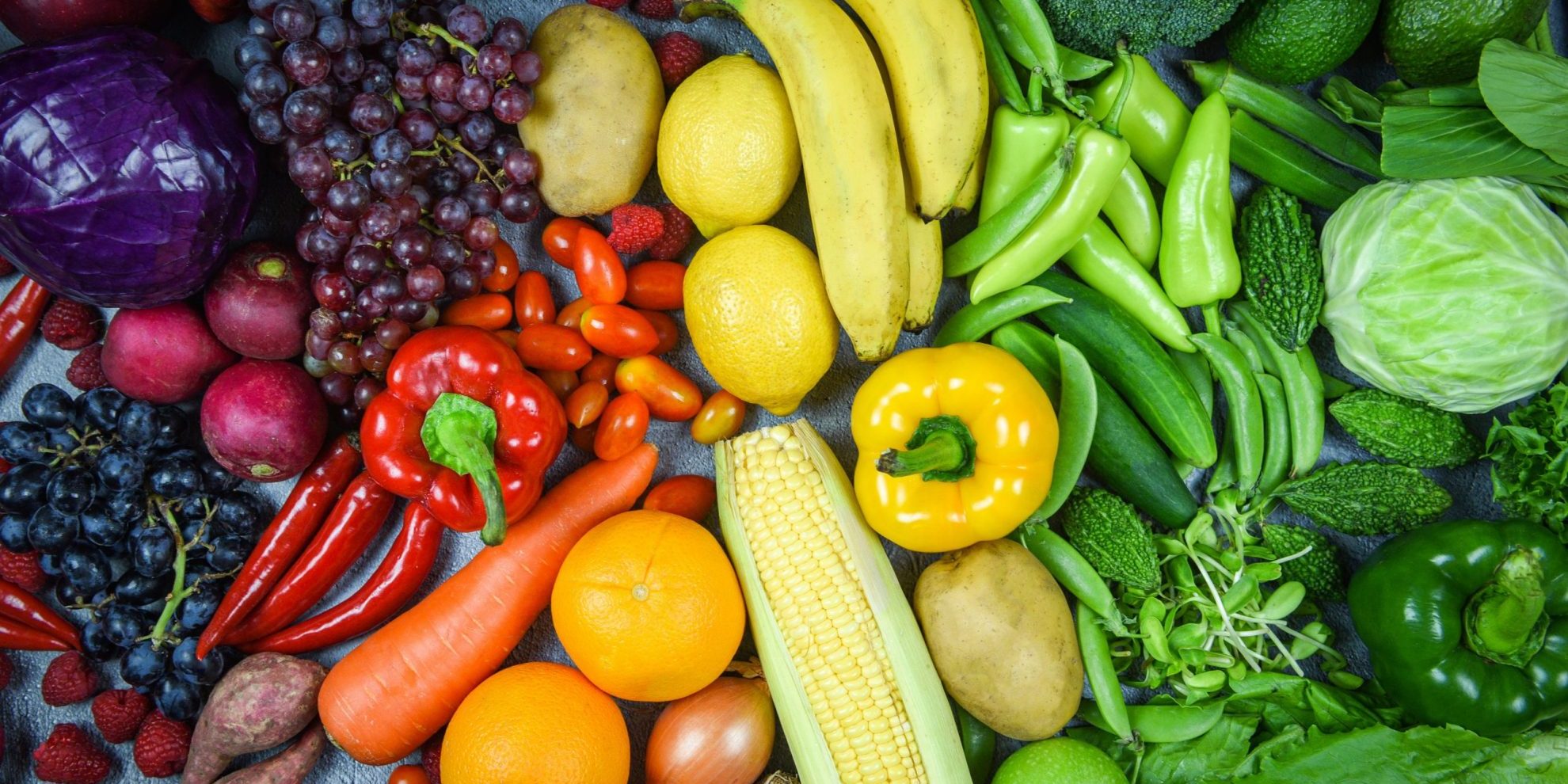Home>Gardening News and Trends>Latest News>How To Make Kids Eat Vegetables


Latest News
How To Make Kids Eat Vegetables
Modified: January 22, 2024
Looking for the latest news on how to make kids eat vegetables? Discover effective strategies and tips to encourage healthy eating habits for children.
(Many of the links in this article redirect to a specific reviewed product. Your purchase of these products through affiliate links helps to generate commission for Chicagolandgardening.com, at no extra cost. Learn more)
Table of Contents
Introduction
Eating vegetables is essential for children’s growth and development. They provide essential vitamins, minerals, and fiber that can promote a healthy immune system and prevent diseases. However, getting kids to eat their vegetables can be a real challenge for parents. Many children have a natural aversion to vegetables, often opting for more sugary and processed options instead.
But fret not! There are plenty of strategies and creative methods that can encourage kids to eat their vegetables happily. In this article, we will explore various tips, tricks, and recipes to help you overcome this common parenting hurdle.
By incorporating these techniques into your child’s routine, you can instill healthy eating habits that will last a lifetime. Plus, it can be a fantastic opportunity for bonding and creating great memories in the kitchen.
Remember, every child is different, and what works for one may not work for another. It may take some trial and error, but with persistence and patience, you can help your child develop a positive relationship with vegetables.
So, let’s dive in and explore the world of making vegetables enjoyable for kids!
The Importance of Kids Eating Vegetables
As parents, we know that a well-balanced diet is vital for our children’s overall health and well-being. And when it comes to a balanced diet, vegetables are an essential component. Here’s why it’s so crucial for kids to eat their veggies:
1. Nutrient Powerhouses: Vegetables are packed with essential nutrients like vitamins, minerals, and fiber. These nutrients play a fundamental role in supporting healthy growth and development. Vitamins such as vitamin C, vitamin A, and vitamin K are essential for a strong immune system, good eyesight, and healthy bones. Fiber helps regulate digestion and prevents constipation.
2. Disease Prevention: A diet rich in vegetables has been linked to a lower risk of chronic diseases later in life. The antioxidants found in many vegetables help protect against cell damage and reduce the risk of conditions like heart disease, certain cancers, and obesity.
3. Energy and Mental Well-being: Vegetables provide the energy and nutrients needed for optimal brain function. Studies have shown that diets rich in fruits and vegetables are associated with improved cognitive performance and decreased risk of mental health disorders such as depression and anxiety.
4. Healthy Habits for the Future: By encouraging kids to eat vegetables from an early age, we’re setting them up for a lifetime of healthy eating habits. Research suggests that children who develop a taste for vegetables at a young age are more likely to continue enjoying them into adulthood.
It’s important to note that offering a variety of vegetables is key. Different vegetables contain different nutrients, so incorporating a rainbow of colors on your child’s plate ensures they get a wide range of vitamins and minerals.
By emphasizing the importance of vegetables in their diet, you’ll be helping your children lay the foundation for a lifetime of good health. So let’s explore some tips and tricks to make vegetables more appealing to kids and encourage them to embrace these nutrient powerhouses!
Tips for Making Vegetables More Appealing to Kids
When it comes to getting kids to eat vegetables, presentation and flavor are key. Here are some effective strategies to make vegetables more appealing to kids:
1. Get Creative with Cooking Methods: Experiment with different cooking methods to bring out the natural flavors and textures of vegetables. Roasting veggies in the oven with a sprinkle of olive oil and a pinch of salt can enhance their taste and add a crispy texture that kids may enjoy. You can also try grilling, steaming, or stir-frying vegetables to add variety to their meals.
2. Sneak Vegetables into Favorite Dishes: If your child is particularly picky, you can try sneaking vegetables into their favorite dishes. For example, blend cooked vegetables like cauliflower, zucchini, or spinach and mix them into pasta sauce, soups, or smoothies. The veggies will go unnoticed while adding an extra nutritional boost.
3. Make it Fun with Shapes and Colors: Use cookie cutters to create fun shapes out of vegetables. Carrot coins, cucumber stars, or bell pepper flowers can make eating veggies a playful experience. Additionally, serving a variety of colorful vegetables can make the meal visually appealing and more enticing for kids.
4. Offer Dips and Sauces: Kids love to dip their food. Pairing veggies with flavorful dips and sauces can make them more enticing. Hummus, ranch dressing, or yogurt-based dips can add a delicious element to raw vegetables like carrot sticks, cherry tomatoes, or celery.
5. Introduce a Vegetable Garden: Get your child involved in growing their own vegetables. This hands-on experience can spark their interest in veggies and make them more willing to try the fruits of their labor. Even if you don’t have a backyard, you can grow herbs or small vegetables in pots on a balcony or windowsill.
6. Set a Good Example: Children often mimic their parents’ behaviors. If they see you enjoying and eating vegetables regularly, they are more likely to follow suit. Make family meals a time to showcase the enjoyment of vegetables and highlight their importance for a healthy lifestyle.
Remember, it’s crucial to be patient and persistent. It may take several attempts for your child to develop a liking for certain vegetables. Keep offering a variety of options and be a positive role model. Let’s move on to the next section, where we’ll explore ways to involve kids in the cooking process and empower them to make healthier choices.
Involving Kids in the Cooking Process
One effective way to get kids excited about eating vegetables is by involving them in the cooking process. When children are active participants in meal preparation, they are more likely to be interested in trying the final product. Here are some ways to get your kids involved in cooking:
1. Grocery Shopping: Take your child along when you go grocery shopping and let them help select the vegetables. Teach them about different types of vegetables, how to choose ripe ones, and explain their nutritional benefits. This engagement can ignite their curiosity and make them more excited about eating the vegetables they picked.
2. Preparing the Ingredients: Allow your kids to assist with washing, peeling, and chopping the vegetables (under your supervision, of course). This can be a great opportunity to teach them basic kitchen skills and safe handling of utensils. It also gives them a sense of ownership and accomplishment when they see their efforts contributing to the meal.
3. Recipe Selection: Involve your child in the recipe selection process. Let them choose a vegetable-based dish or suggest their own ideas. This empowers them to make decisions and ensures they have a say in what they’ll be eating, increasing their enthusiasm for trying new vegetables.
4. Cooking Tasks: Assign age-appropriate tasks to your child while cooking. They can help mix ingredients, stir sauces, or assemble dishes. When children actively participate in creating a meal, they become more invested in the final result and are more willing to try what they’ve made.
5. Taste Testing: Encourage your child to taste the vegetables at different stages of cooking. This helps them understand how flavors develop and enables them to identify the flavors they enjoy. They can provide feedback on seasoning or suggest additional ingredients, making them feel like valued contributors to the meal.
6. Meal Presentation: Let your child take charge of plating the vegetables. They can arrange vegetables in a visually appealing way, creating fun patterns or faces on the plate. When kids take ownership of the final presentation, they become excited to show off their creations and are more likely to enjoy eating them.
Involving kids in the cooking process not only builds their culinary skills but also creates a positive association with vegetables. It fosters a sense of responsibility towards their own health and encourages them to make healthier choices. Now, let’s explore some creative and fun ways to serve vegetables that will make mealtime enjoyable for everyone.
Creative and Fun Ways to Serve Vegetables
When it comes to getting kids excited about eating vegetables, presentation is key. By making vegetables visually appealing and fun, you can entice even the pickiest of eaters to give them a try. Here are some creative and fun ways to serve vegetables:
1. Veggie Skewers: Thread cherry tomatoes, cucumber slices, bell pepper chunks, and other veggies onto skewers to create colorful and appealing kabobs. You can let your child arrange the veggies in patterns for added engagement.
2. Vegetable Pizzas: Use whole wheat pita bread or tortillas as pizza crusts and let your child choose and spread a tomato or pesto sauce. Then, provide an array of colorful vegetable toppings like sliced mushrooms, bell peppers, zucchini, and olives. Let your child get creative with their favorite combinations.
3. Vegetable Pasta: Add colorful vegetables like broccoli florets, grated carrots, or spinach leaves to pasta dishes. The vibrant colors will make the meal more visually appealing, and they’ll add a nutritional boost to the dish.
4. Veggie Wraps: Create vegetable wraps using lettuce leaves or tortillas. Allow your child to choose their favorite vegetables, such as shredded carrots, thinly sliced cucumbers, and avocado. These wraps are not only nutritious but also fun to assemble and eat.
5. Sweet Vegetable Desserts: Sneak vegetables into sweet treats for a healthier twist. Incorporate ingredients like grated zucchini or mashed sweet potato into muffins, brownies, or pancakes. Your child will enjoy the delicious taste, and you’ll appreciate the added nutrients.
6. Vegetable Chips: Make homemade vegetable chips by thinly slicing root vegetables like sweet potatoes, carrots, and beets. Lightly coat them with olive oil, sprinkle with seasoning, and bake until crispy. These crunchy snacks are a healthier alternative to store-bought chips.
7. Vegetable Sushi Rolls: Create sushi rolls using a sheet of seaweed (nori), rice, and an assortment of finely sliced vegetables like cucumber, carrot, and avocado. Let your child roll the sushi using a bamboo mat for a hands-on and nutritious sushi-making experience.
8. Veggie Dips: Offer a variety of healthy and flavorful dips, such as guacamole, salsa, or yogurt-based dips, alongside raw vegetable sticks. The combination of crunchy veggies and tasty dips will make snacking on vegetables more enjoyable.
Remember, the key is to make eating vegetables feel like a fun and enjoyable experience. By trying these creative and exciting serving ideas, you can encourage your child to explore the colorful world of vegetables and develop a love for healthier eating habits. Let’s continue by discussing how to promote a positive attitude towards vegetables in your child.
Encouraging a Positive Attitude Towards Vegetables
Instilling a positive attitude towards vegetables in your child is essential for their long-term health and well-being. Here are some strategies to foster a positive relationship with vegetables:
1. Lead by Example: Show your child that you enjoy eating vegetables and emphasize the positive impact they have on your health. Children often imitate their parents’ behaviors, so make sure to model positive eating habits by including a variety of vegetables in your own meals.
2. Make it a Family Affair: Involve the entire family in meal planning and preparation. Allow your child to contribute ideas for vegetable-based meals and let them take part in cooking and setting the table. This creates a sense of ownership and reinforces the notion that vegetables are an important part of family meals.
3. Celebrate Small Victories: Praise your child’s efforts and positive experiences with vegetables. When they willingly try a new vegetable or show enthusiasm towards a vegetable dish, acknowledge their accomplishment and provide positive reinforcement. This positive reinforcement helps create a positive association with vegetables.
4. Variety is Key: Introduce a diverse range of vegetables to your child’s diet. Offer different colors, textures, and flavors to keep meals exciting and interesting. Encourage them to try new vegetables regularly and emphasize the adventure of exploring new tastes.
5. Be Patient and Persistent: It takes time for children to develop a liking for certain vegetables. Don’t force them to eat vegetables or make negative comments if they refuse. Instead, continue to offer a variety of vegetables in different preparations and encourage them to try small bites. Over time, their taste buds may adjust, and they may develop a preference for certain vegetables.
6. Foster Food Exploration: Engage your child’s senses by allowing them to touch, smell, and explore various vegetables. Take them to the grocery store or farmers’ market and let them select a new vegetable to try. Being involved and curious about vegetables can often lead to a greater willingness to try them.
7. Create Positive Food Memories: Associate positive memories and experiences with vegetables. Plan picnics, outings, or special occasions where vegetables are a central part of the celebration. When children connect happy memories and moments with eating vegetables, they are more likely to develop a positive attitude towards them.
Remember, each child is unique, and their taste preferences may vary. Be patient, keep trying, and celebrate every small step towards embracing vegetables. By creating a positive environment and fostering a love for vegetables, you are laying the foundation for a lifetime of healthy eating habits.
Dealing with Picky Eaters
Having a picky eater at home can be challenging, especially when it comes to getting them to eat their vegetables. Here are some strategies to help deal with picky eaters:
1. Offer Choices: Let your child have some control over what vegetables they eat by offering them choices. Present two or three vegetable options and ask them to pick one for their meal. This gives them a sense of autonomy and makes them more likely to eat the vegetable they have chosen.
2. Start with Familiar Flavors: Introduce new vegetables gradually by starting with flavors your child already enjoys. For example, if they like sweet foods, start with naturally sweet vegetables like carrots or sweet peas. As they become more comfortable with those flavors, gradually introduce other vegetables.
3. Sneak Vegetables into Favorite Dishes: Incorporate vegetables into dishes your child already loves. Add pureed vegetables to sauces or casseroles, or finely chop vegetables and mix them into meals like spaghetti or meatloaf. The vegetables will blend in, providing added nutrition without altering the familiar taste.
4. Make it a Game: Turn mealtimes into a fun and interactive experience. Create games like “veggie challenges” where your child earns points or rewards for trying new vegetables. Use colorful charts to track their progress and celebrate their achievements.
5. Shredded or Pureed: Some picky eaters may have textural aversions to certain vegetables. Experiment with different textures, such as shredding or pureeing vegetables, to make them more palatable. For example, grated zucchini can be added to muffins or smoothies, while pureed butternut squash can be incorporated into macaroni and cheese.
6. Offer Dip Options: Kids often enjoy dipping their food, so provide a variety of healthy dips like hummus or yogurt-based dressings. This can make vegetables more appealing by adding flavor and a fun element to the eating experience.
7. Don’t Force, but Keep Offering: Avoid pressuring your child to eat vegetables, as this can create negative associations. Encourage them to try new vegetables, but if they refuse, don’t force the issue. Instead, continue offering a variety of vegetables in different ways and remind them that it’s okay to have preferences.
8. Lead by Example: Show enthusiasm for vegetables yourself and include them in your own meals. When children see you enjoying and embracing vegetables, they may become more open to trying them as well.
Remember, each child may have different preferences and it may take time for their tastes to evolve. Be patient, keep offering a varied selection of vegetables, and celebrate small victories. With time and consistent exposure, even the pickiest of eaters can develop a more adventurous palate.
Now, let’s move on to explore some sneaky vegetable tactics that can help boost your child’s vegetable intake without them even realizing it.
Sneaky Vegetable Tactics
For extremely picky eaters, sometimes a little creativity is needed to increase their vegetable intake. Here are some sneaky tactics to incorporate more vegetables into their diet:
1. Veggie-packed Smoothies: Blend vegetables like spinach, kale, or cucumber into fruit smoothies. The natural sweetness of the fruits will mask the taste of the vegetables, making it easier for your child to consume them without even realizing it.
2. Hidden Vegetable Sauces: Puree vegetables like carrots, bell peppers, or squash and add them to sauces, such as pasta sauce or pizza sauce. The vegetables blend seamlessly into the sauce, providing added nutrients and a boost in vegetable intake.
3. Vegetable Muffins and Pancakes: Grate vegetables like zucchini, carrots, or sweet potatoes and add them to muffin or pancake batter. The vegetables add moisture, texture, and nutritional value to these treats without compromising on taste.
4. Veggie-loaded Omelets: Sneak finely chopped vegetables, such as spinach, mushrooms, or bell peppers, into omelets or scrambled eggs. The mix of flavors and textures can make the dish more exciting for picky eaters while increasing their vegetable intake.
5. Hidden Vegetable Pizzas: Puree vegetables, such as cauliflower or broccoli, and mix them into the pizza crust or sauce. Your child won’t notice the subtle addition, but they’ll be getting an extra serving of vegetables.
6. Vegetable-filled Soups and Stews: Puree or finely chop vegetables and add them to soups or stews. This method allows the vegetables to blend into the dish, making it easier for picky eaters to consume them.
7. Zucchini Noodles: Use a spiralizer or a vegetable peeler to create noodles from zucchini. These “zoodles” can be a fun and nutritious substitute for traditional pasta dishes and are an excellent way to sneak in an extra serving of vegetables.
8. Veggie-loaded Burgers: Mix finely chopped vegetables, such as mushrooms, carrots, or bell peppers, into burger patties. The vegetables add moisture and flavor while increasing the nutritional value of the meal.
It’s important to note that while sneaky vegetable tactics can be helpful in increasing vegetable consumption, they should not replace the intentional exposure and encouragement of whole vegetables. As your child becomes more accustomed to the presence of vegetables in their meals, they may be more open to accepting and enjoying them in their natural state.
By incorporating these sneaky vegetable tactics gradually, you can help your picky eater receive the nutritional benefits of vegetables while expanding their palate and laying the foundation for healthier eating habits.
Now that we’ve explored various strategies to make vegetables more appealing and sneaky approaches to increase vegetable intake, let’s recap the key points and provide some closing thoughts on encouraging kids to eat vegetables.
Conclusion
Encouraging kids to eat vegetables may seem like a daunting task, but with the right strategies and a little creativity, it is possible to develop a positive attitude towards vegetables in your child. By understanding the importance of vegetables in their diet and implementing tips such as making vegetables more appealing, involving them in the cooking process, and using sneaky vegetable tactics, you can increase their vegetable intake and foster healthy eating habits.
Remember to lead by example and create positive food memories around vegetables. Offer a variety of options, be patient, and celebrate every small step of progress. It may take time for your child to develop a liking for certain vegetables, but with persistence and a positive approach, you can make vegetables a regular and enjoyable part of their meals.
Keep in mind that every child is different, and what works for one may not work for another. Be flexible in your approach and adapt the strategies to suit your child’s preferences and needs.
As your child grows and develops, their taste buds may evolve, and their love for vegetables may continue to flourish. By instilling healthy eating habits and a positive attitude towards vegetables from an early age, you are setting the stage for a lifetime of good health and well-being.
So, let’s embark on this journey of making vegetables more appealing, enjoyable, and a regular part of your child’s diet. With your dedication and creativity, you can make a significant difference in their nutrition and overall health. Let’s get started on creating delicious and nutritious meals that your kids will love!










